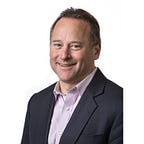Remote Patient Monitoring 101: What Is RPM and What Are the Benefits?
Remote patient monitoring (RPM) is a form of telehealth where patients use portable medical devices and mobile technology to monitor, record, and transmit health-related data to their healthcare provider.
The data that is typically collected by RPM devices includes things like weight, pulse rate, blood pressure, temperature, blood sugar level, respiration rate, and other vitals. Once the data is recorded, it is sent to a healthcare provider who can review it with a dedicated telehealth computer system or via a smartphone or tablet. Advances in technology mean that providers can now monitor their patients continuously in near-real time, or even real time from a distance.
RPM Applications
Remote patient monitoring is particularly useful for monitoring patients with both acute medical conditions and chronic health issues, patients that have recently been discharged from the hospital, patients in rural areas, those who live far from specialty care providers, and patients in long-term care facilities.
Being able to remotely monitor the health of high-risk patients means that healthcare facilities can keep a closer watch on those patients between visits. In some cases, fewer in-person visits are needed. In care facilities, RPM allows providers to monitor patients more closely, even when they cannot physically be on-site or in the room with them. The provider is alerted to any potential health issues that arise so that they can take the necessary precautions and intervene when needed.
Hospital-at-Home Programs
Healthcare providers are increasingly establishing hospital-at-home programs that allow patients to receive care for more serious acute medical conditions without having to leave their home. RPM programs such as these can include a wide range of diagnostics and treatments, including ECGs and X-rays, as well as treatment with oxygen therapy or intravenous fluids, for example. While patients being treated in hospital-at-home programs typically receive some in-person care, their health is monitored continually by a team of medical professionals using remote telehealth applications and services.
Monitoring of Chronic Health Conditions
For patients with chronic health conditions, remote patient monitoring allows health practitioners to monitor their patients in real time. Having access to medical data enables them to adjust their care or medication to ensure the best health outcome for the patient. Being able to continually track biometrics and vital signs is useful when treating patients with long-term health conditions such as asthma, diabetes, hypertension, heart conditions, mental health issues, or those suffering from adverse symptoms of long COVID.
Post-Surgery Monitoring
Remote patient monitoring can also be used to monitor patients recovering at home once they have been discharged from hospital following surgery. For example, patients that have undergone surgery for a heart procedure can have vital signs such as heart rate, blood pressure, and blood oxygen levels monitored continuously to reduce the risk of complications. This monitoring can also give the patient peace of mind — even though they’ve left the hospital, they are still receiving care.
Tracking the Recovery of Injured Employees
Remote patient monitoring can also be useful for businesses that want to track employees who have been injured while on duty and have claimed workmen’s compensation. RPM allows businesses to monitor their recovery process to determine when they are fit to return to work.
Geriatric Care
Another area where remote patient monitoring is particularly useful is for monitoring older patients at home or in care facilities. Even in a facility, a carer cannot always be physically present every moment. Motion-detecting RPM equipment can alert carers when patients are attempting to get out of bed, for example, so they can assist the patient and thereby help prevent falls.
RPM can also be used to monitor the mental health of geriatric and adult patients with mental health conditions like depression and anxiety. For example, motion-tracking technologies can pick up physical symptoms of agitation and distress — like hand wringing, pacing, and pulling on garments.
RPM Technologies
A variety of devices can be used to remotely monitor a patient’s health and vital signs. Simple solutions include weight scales that send their data to the user’s healthcare provider, calorie or diet tracking programs where patients keep track of their diet, wearable blood glucose monitors for diabetics, pulse oximeters that measure pulse rate and blood oxygen levels, or more specialized equipment such as surveillance monitors and motion detectors to monitor patients with dementia or Parkinson’s disease.
RPM solutions can also include consumer wearable devices such as smartwatches, which can track a variety of health metrics. These devices make it easy for the user to keep tabs on their health on a day-to-day basis and to share that information with their healthcare provider.
More specialized equipment such as non-invasive radar-powered monitoring can provide continual monitoring and tracking of a patient’s vital signs, then relay this information to nursing staff who can act accordingly when potential health risks are detected.
With TapestryHealth’s innovative remote patient monitoring solutions, patients in nursing homes, post-acute, or post-surgery facilities can be monitored 24/7. The company’s technologies also use AI and machine learning to analyze patient health data, detect even small changes, and alert caregivers in advance of a patient’s decline or other adverse health event. Altogether, the system helps facilities provide continuous care and reduce hospitalizations. TapestryHealth’s solutions can also help reduce staff burnout by allowing them to focus on the highest-risk patients and avoid “alert fatigue.”
